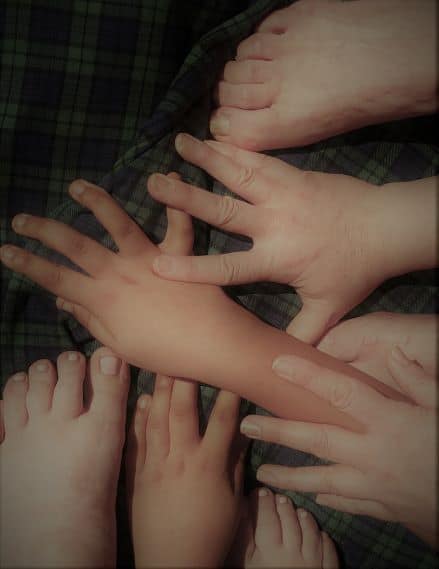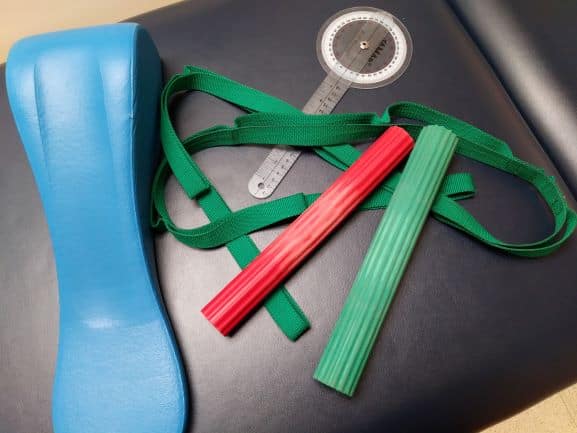
As a physical therapist, I have had the personal pleasure and professional luxury of working with occupational therapists in the settings where I work and have worked. This interprofessional collaboration can often be a learning experience for both clinicians, while at the same time optimizing outcomes for patients.
I had the opportunity to talk with three occupational therapy clinicians about this topic. All three often co-treat within their respective settings.
Kim Jones, MS, OTR/L has worked in an acute care hospital setting for the past two years. Trish McBurney, COTA/L has worked for twelve years in a school setting, and Marissa Tetreault, OTR/L has worked for two years in a hospital-based outpatient setting where patients with both orthopedic and neurological diagnoses are common. Here’s what they had to say.
In what ways do you find physical and occupational therapy collaboration or co-treatment beneficial?
Kim
I see a benefit in safety, especially with patients with cognitive deficits. It can be very beneficial to have multiple people there; the treatment becomes much more effective. The patients can do more, you’re able to get them up and get them out further. OTs look more at cognition and how a patient interacts with their environment, and so we can use that to our advantage to help PT obtain their objectives as well. Sometimes we can approach patients in different ways that might make them more receptive to following instructions. I feel like I will often try to rephrase things for patients if they’re not able to follow commands or find different teaching strategies that can be helpful. Sometimes you need one person to manage their mobility and the other to manage their mentation, focus, and attention. And, for patients who need a 2-person assist, I don’t think that either one of us would be able to get the same level of intensity out of the treatment without another skilled clinician. When I am working with a PT to transfer a patient, I know that we’re going to be working as a unit because we’re both trained and know what to do. Co-treatment can maximize therapeutic intensity.
Trish
I find this collaboration to be very helpful as it can provide more support when treating a more involved student or one with sensory issues or behavioral challenges. It’s also more motivating for the therapist(s) because of the fun and creative energy that is generated by working together to meet the student’s goals. The students seem to enjoy this dynamic too. Additionally, it’s a more holistic approach, which helps me to see the whole student through a different lens and to remember how the different disciplines are working together to meet the same goal of having the student function as independently as possible within the school environment. It’s a learning experience to see the strategies and treatment ideas of another therapist.
Marissa
I love co-treating. It’s mostly neuro patients that we do co-treats with. [For example], right now we have a patient with TBI (traumatic brain injury) who can’t tolerate 3 hours of therapy; he can’t do speech, PT, and OT back to back to back, so co-treats are very handy. If he can handle 2 hours, then they don’t have to bring him to the clinic every single day. It’s better for caregivers; it takes a little bit of burden off them and optimizes a patient’s recovery and time here. Instead of getting a [less effective] 40-minute session with OT, they’re getting 45 minutes to an hour of good overall body treatment. And a lot of times when you have two people [giving you instructions], it’s a lot of brain work and stimulation for the neuro patients.
Have you ever been met with resistance to co-treatments, either from patients or other clinicians?
Kim
There have been patients with psych issues and they may use it as a way to try to use a therapist as a wedge I don’t think I’ve ever had a therapist that said, “I don’t want to treat with you,” but I definitely think there are some therapists who are like, “I work solo,” and they aren’t necessarily interested, which is fine. I do think that sometimes you miss out on how much potential a patient has when you don’t have additional clinicians there, but there are always things that you can do one-on-one as well.
Trish
I have not experienced any resistance to co-treatment from other therapists or the students. Sometimes a parent will be resistant to this model because they feel their child is losing out on some therapy time. However, co-treatment can often be a more productive and efficient use of time, particularly when a student has multiple services and spends a lot of time outside of the classroom.
Marissa
No. It’s just so much more beneficial for a patient with a co-treat, especially when they’re getting all 3 disciplines. Patients don’t care because I don’t think they necessarily know the reason; they’re just like, ‘Oh, you’re both here.” Most of the time they don’t want to be here for 3 hours… It’s nice for me too, because I’m upper body. I love doing things like a ball toss, but if someone’s not safe on their feet then I’m not going to go and do that by myself. You need another person… so there are safety reasons too. We all get more out of it.
Do you see any gray area between PT and OT in your setting?
Kim
Absolutely. I’m always going to walk a patient if I can. I don’t consider myself adept or skilled at gait training, but I always want to know what their mobility looks like because mobility is so important for ADLs (activities of daily living). And ADLs are important for PT as well… because you need to know what their ADL demands are to determine what their mobility needs are. So I do see overlap… I’m also happy to walk a patient down the hallway because my job is to engage patients in meaningful occupations. So if that’s meaningful for the patient, I’m going to walk them, even if I’m not “gait training” them. We have some PTs here who… are willing to do a lot more ADL stuff, like recommending or training on equipment, where I see that more like an OT domain.
When you look at how broad our domain is… anything can relate to what is meaningful for the patient. What’s a meaningful occupation, what’s functional to the patient, and how do we do that? A big thing that they trained us in grad school was activity analysis, and breaking down an activity into little parts, and identifying the deficits. Is it attention or is it coordination, or is it strength or is it endurance? And then focusing on that and remediating that deficit. It’s not necessarily just doing ADLs, you know? You’re looking at all the pieces of function that become the task.
Trish
I do not see much if any gray area between OT and PT in the school setting. The treatment areas are pretty well delineated as dictated by the common core requirements followed in the IEP (Individualized Education Program) document. There is some overlap in treatment strategies; for example, core strengthening activities are necessary to support distal control for fine motor activities, as well as endurance for maintaining an upright position for tabletop activities. The parents or educators can be confused on the role of each discipline in the school setting, but not typically by the therapists themselves. Sometimes, education on the scope of our roles is needed.
Marissa
Always; it’s just a matter of focusing on what the patient needs. So a lot of times with PT, if someone has a shoulder subluxation or they have the start of one, I’m adapting all of PT’s exercises to make sure that that’s not happening. And that it doesn’t interfere with their PT treatment. So if we do a co-treat, in that sense it’s making sure they’re wearing their sling properly, especially for ambulation, and just focusing more on the gross motor aspects with PT. But there’s always a gray area when it comes to gross motor coordination. PTs can sit there and throw a ball with a patient, but what are they working on in reference to what am I working on?
[When it comes to the upper versus lower body], it’s pretty clear here: OTs treat shoulder to fingertips. And we have CHTs (certified hand therapists) that are seeing more of the hand injuries, tendon injuries, and things like that. Sometimes I’ll take a neck if it has a lot of shoulder components to it, but typically if it’s just a neck with some upper trap involvement I’m going to send it to PT because I’m not trained with cervical… If it’s a neck referral, it goes straight to PT. If PT treats it for 2 weeks and they decide it’s not neck pain, it’s coming from the shoulder, scapula, and trap then usually it comes over to me. When I have someone I’ve seen for so long and OT didn’t help them, I want them to go see PT because maybe something they’re going to do is going to help.

Bringing it All Together
I could not agree more with all the sentiments my colleagues have expressed. Despite the varied settings, some themes stuck out to me during these conversations. First, more than once it was noted that there is a crossover between occupational therapy and speech therapy as well; feeding and cognition are important components of both disciplines. I see this crossover from a physical therapy perspective as well: poor posture or decreased proximal stability, for whatever reason, can influence breath control and speech. And in pediatrics, a speech-language pathologist can be invaluable in helping a PT understand the best ways to communicate with a child for optimal participation and minimizing frustration.
Second, as you may have noted above, all of these clinicians remarked on how collaboration and co-treatment translate into treating the patient as a whole instead of strictly delineating between upper and lower body, fine and gross motor. It’s all connected. Fine motor control does not exist without gross proximal stability. Mobility is required for meaningful occupation and ADL performance.
Finally, we are all a team working toward the same goal of helping our patients. We should help each other. I have learned so much from all the occupational therapists I have had the opportunity to work with over the years. An interdisciplinary approach to rehabilitation not only improves time efficiency but improves functional results for our patients.

😁🤔